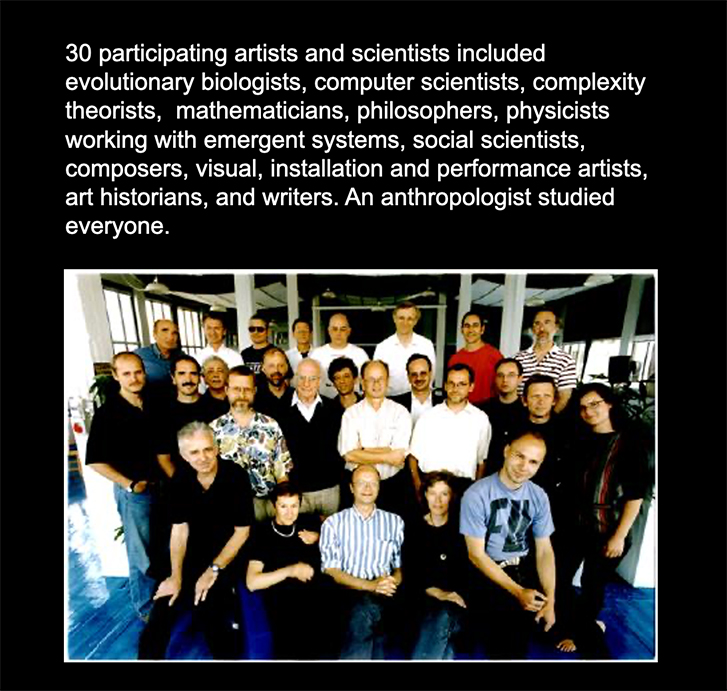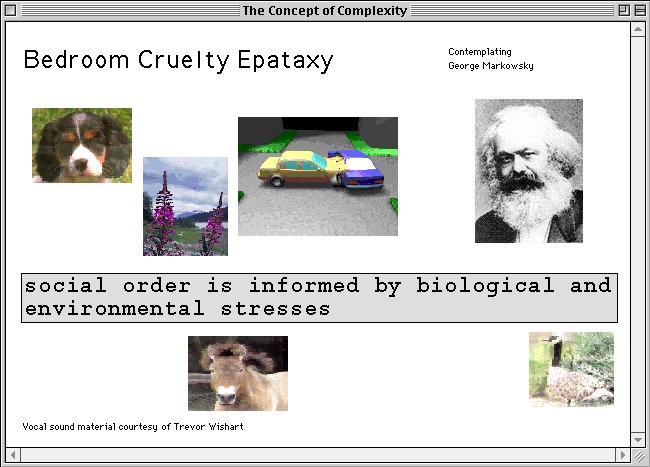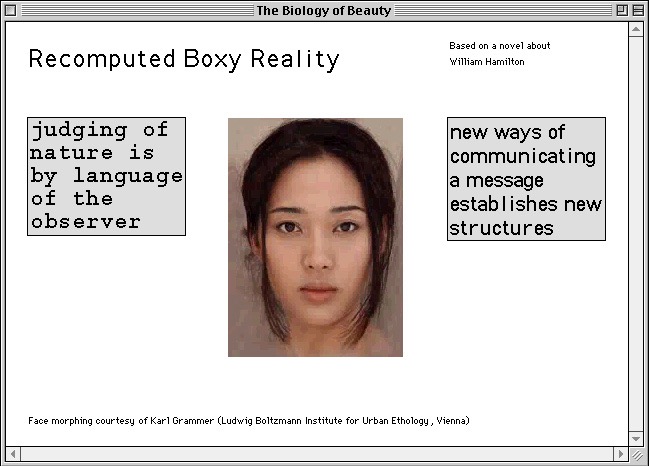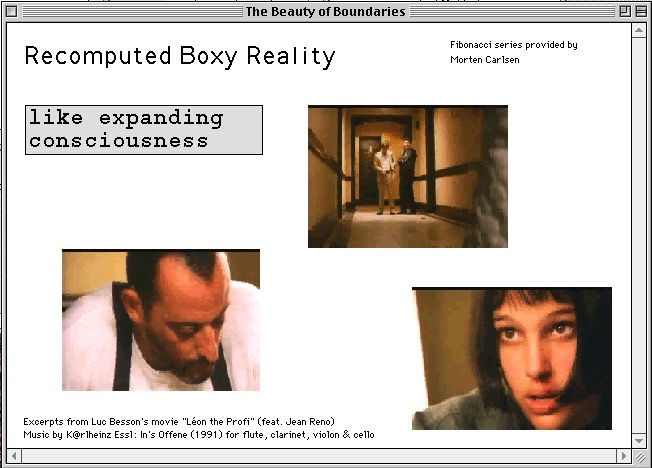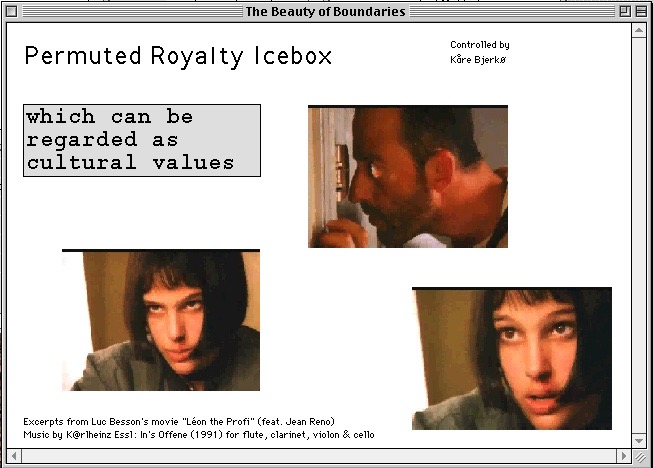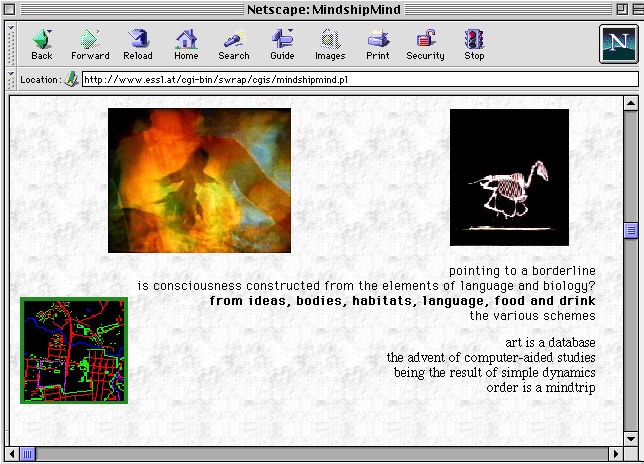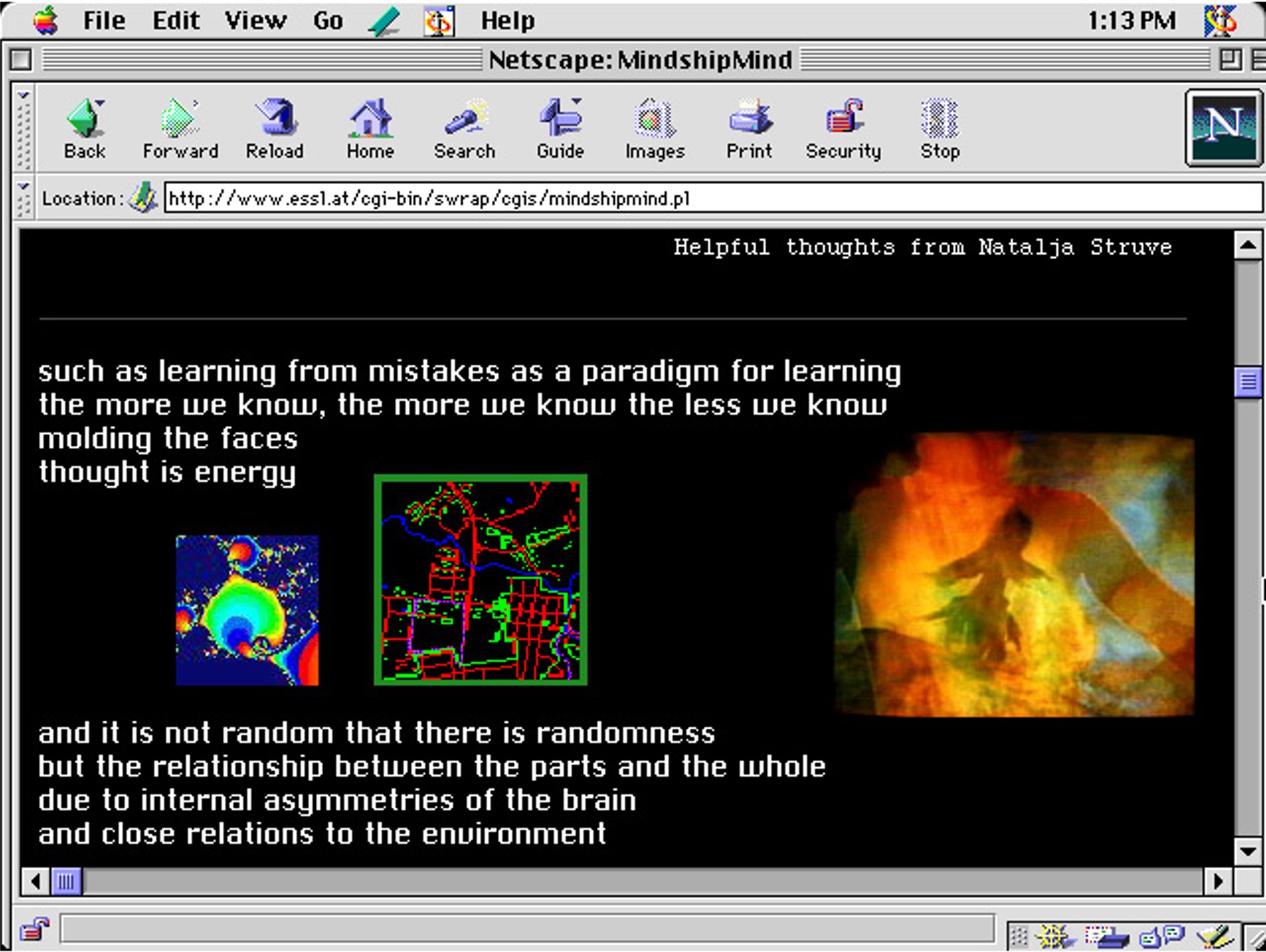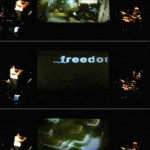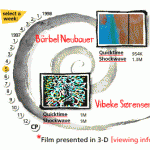MindShipMind is an interactive multimedia installation which was started in summer 1996 during an interdisciplinary 3 week seminar on:
• order
• complexity
• beauty
in Copenhagen, Denmark. This seminar was organized by the Mindship Foundation and its purpose was to create collaborations between 30 artists and scientists from different fields, and a new way of discussion and interaction beyond the normal academic way.
This piece exists as a multimedia computer installation running on Apple Macintosh computers and a web version as well. As a work in progress, it was presented several times both in Europe and the United States, at festivals such as ISEA 97(Chicago).
The chaotic and autopoietical situation of the “MindShip” found its artistic manifestation in a multimedia installation called “MindShipMind” which emerged during an inspiring collaboration between the Austrian composer Karlheinz Essl and the Californian video artist Vibeke Sørensen. In order to capture the beautiful and also chaotically ordered mind of this event, Vibeke Sorensen and Karlheinz Essl asked the 30 participating artists and scientists (including biologists, mathematicians, physicists, composers, visual, installation and performance artists) to write statements describing their points of view on this theme. Combined with additional commentaries prepared by Sorensen, all these texts were algorithmically processed by a markov-chain based computer program in order to deconstruct and reconstruct them into new “meta-texts”. New texts are generated from these text particles using random operations which create strange and mind-challenging meanings, often revealing secret wisdom about the mysteries of “order, complexity, and beauty”.
This textual layer is further combined with images provided by the participants, including original artworks of Vibeke Sorensen (San Diego) and Joseph Jean Rolland Dubé (Shawinigan, Québec), and objets trouvées found on the World-Wide Web, such as famous philosophers and mathematicians, popular films, scientific computer animation, and morphing images of faces. As with the texts, these images form material from which elements are chosen according to probability and randomness, and merged into the text layer. Furthermore, the distortion and size of the pictures are determined algorithmically, as is the placement on the web pages. Finally, algorithmic music drawn from Karlheinz Essl’s Lexikon-Sonate (which is also composed in realtime) and computer-generated speech are included. All these elements are combined by a computer program written in Perl by Florian Cramer (Berlin) and Karlheinz Essl (Vienna) which always creates a new web page on the fly whenever it is loaded.
The on-screen images, text, and music change each time the user interacts with the site. Random operations affect the appearance of the different components (text style, size and distortion of pictures, combination of sound structures, computer speech, hyperlinks, status bar messages etc.) – all these components are not viewed as fixed entities, but rather as a flexible material molded by chance. Many of the emerging hyperlinks cause other programs to run at remote sites around the world: the user is then brought to sites on the network that are not pre-determined or predictable. The result is that of constantly shifting meanings arising from constantly shifting relationships between the site elements, the network, and the user. It is a way of navigating the web through an interface of real-time poetic serendipity, and a way of interfacing to the vast network of on-line computing. It is also a kind of collective consciousness of the MindShip and its participants, hence a “MindShipMind.”

